�
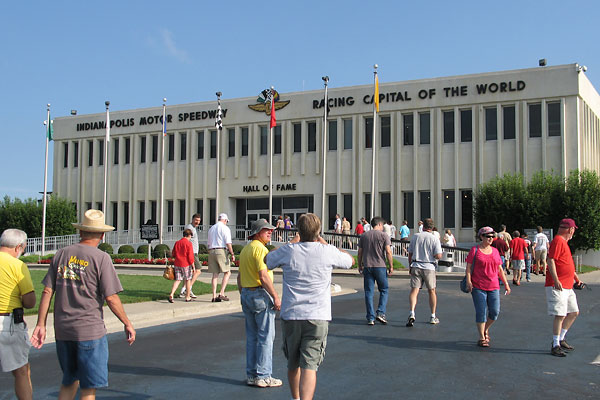
�
Indianapolis Motor Speedway - Racing Capital of the World - Hall of Fame
�
BritishV8 2010: Touring the Indy 500 Hall of Fame Museum
� as published in BritishV8 Magazine, Volume XVIII Issue 1, December 2010�� by: Curtis Jacobson�
�
On Saturday July 10th, BritishV8 meet participants gathered to visit Indianapolis Motor Speedway,�
and specifically to tour the Indy 500 Hall of Fame museum.�
�
A historic marker in front of the Hall of Fame reads as follows.�
"Indianapolis Motor Speedway: constructed in 1909, the Speedway has contributed significantly to�
the advancement of automotive technology and development of safety devices. It is unchallenged�
as the world's oldest continuously operated race course and the site of the largest one-day�
sports event anywhere. Listed on the National Register of Historic Places and dedicated on the�
59th running of the 500, May 25, 1975. (Presented by Historic Landmarks Foundation of�
Indiana.)"�
�
�
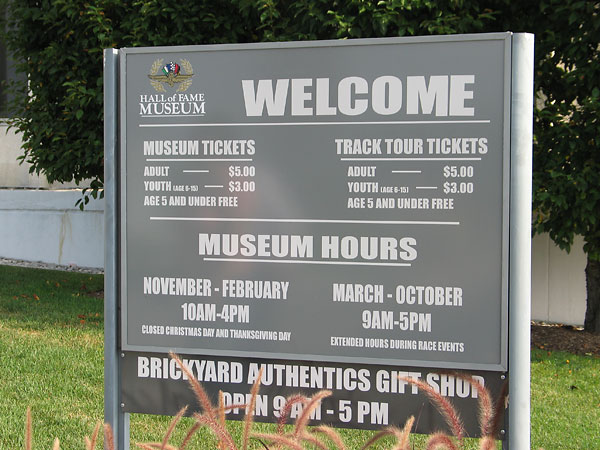
�
Open whenever you want to go. Easily affordable. Go! Now! Return soon!
�
Vehicles with Nothing to do with the Indy 500
�� The Indianapolis 500 Hall of Fame museum has made an effort to display vehicles that put "Indycars" � in perspective. Some of them miss the mark rather badly. Perhaps a two ton 1914 Marmon "roadster",� a 1927 Duesenberg land yacht, or a 1939 Indian motorcycle would interest your brother-in-law, but they� belong in the Smithsonian, not here. Incidentally, the Smithsonian's own car collection is a national� disgrace. Look for it in the basement of the National Museum of American History if you want to see a� worn out Ford Pinto or a very average and faded Dodge minivan. However, some of the Hall of Fame's� non-Indy veteran racecars are quite interesting. I lingered longest at these two.�
��
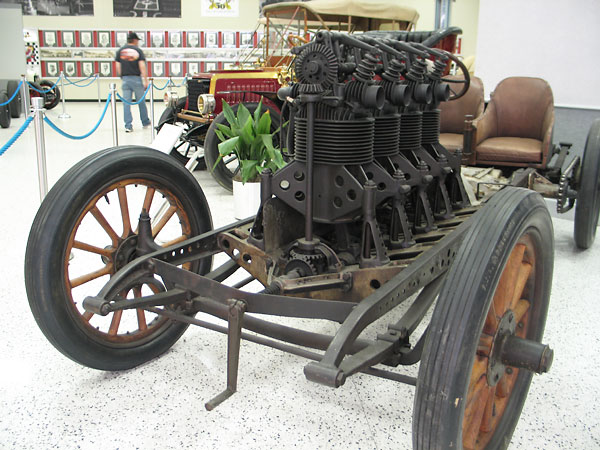
�
This "Premier Special" was built by the Premier Motor Company of Indianapolis in 1903, six years before
�
"the brickyard" was constructed. This car was built specifically to contest the first Vanderbilt Cup Race,
�
but wasn't allowed to compete because it exceeded the maximum weight rule. Despite absense of any
�
bodywork and hundreds of drilled lightening holes, this goliath still tipped the scales ar 2320 pounds.
�
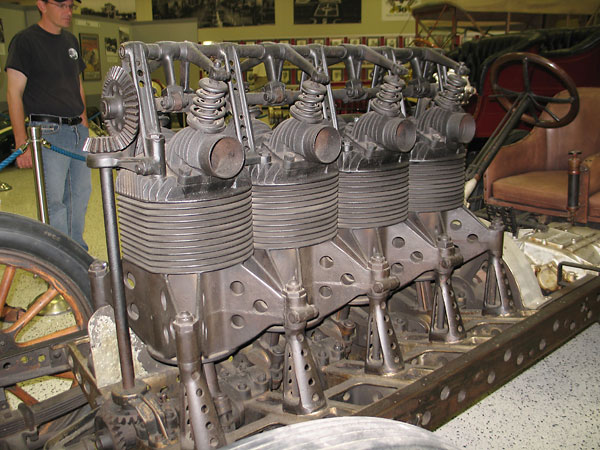
�
No oil filter. The Premier Special 923cid engine is especially interesting because it features an open crankcase.
�
According to the company, this engine produced 100 horsepower at 1000rpm. Whether you believe that or not, the
�
Premier Special did clock a very respectible 59.21mph test lap of the Indiana State Fairgrounds' one mile track.
�
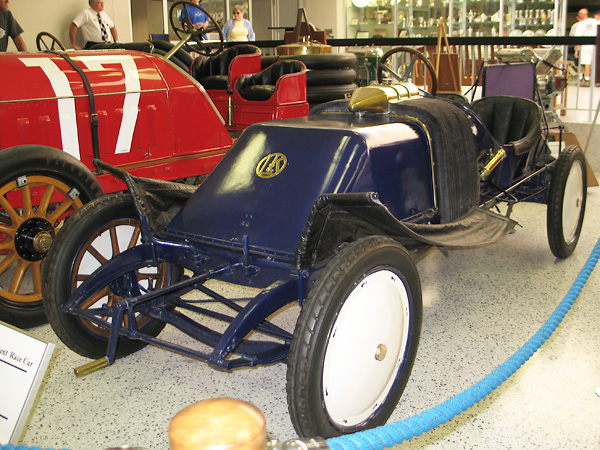
�
Aerodynamic wonder. Located in Prague, capitol of today's Czech Republic, the Laurin & Klement firm built
�
this "Type S-2" racecar in 1906 for Yugoslavia's Baron Leo Haan. Haan added a rudder to the tail of the car and
�
attached it via linkage to the steering wheel, with the effect of significantly improving the car's cornering behavior
�
at speed. The car was already notably streamlined, with smooth hubcaps over its spoked wheels and with a
�
chisel-shaped nose. The radiator wraps tightly around the cowl, as was a popular fashion in that era.
�
Indy 500 Racing with the Engine Up Front
��
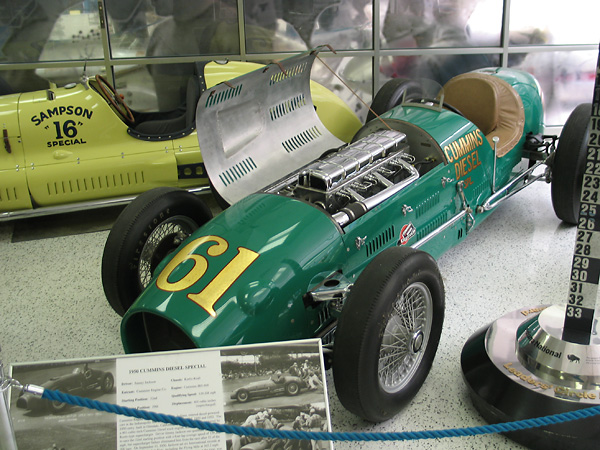
�
We could have included dozens of photos here from the first fifty years of the Indy 500. The Hall of Fame museum
�
features many spectacular cars from this era, and displays them very well, but the 1950 Cummins Diesel Special
�
is far and away our Editor's favorite. Cummins entered diesel-powered cars in the 1931, 1934, 1950 and 1952
�
Indy 500s. This one featured a 401cid supercharged heavy duty truck engine, which was sufficient to power it
�
around the Indy track at 129.208mph (four lap average). Unfortunately, the supercharger failed at lap 52.
�
Later in 1950 the Cummins Diesel Special completed a record breaking Flying Mile at Bonneville at 165.2mph
�
| �
Enjoying this article? Our magazine is funded through the generous support of readers like you! � To contribute to our operating budget, please click here and follow the instructions. � (Suggested contribution is twenty bucks per year. Feel free to give more!)� |
British Racecars that Revolutionized the Indy 500
��
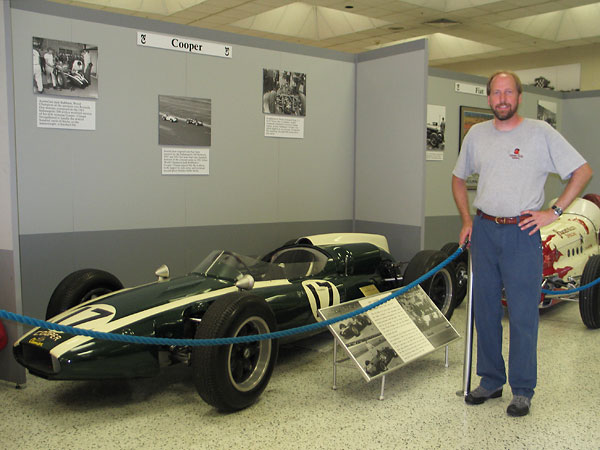
�
Jack Brabham's 1961 Cooper-Climax.
�
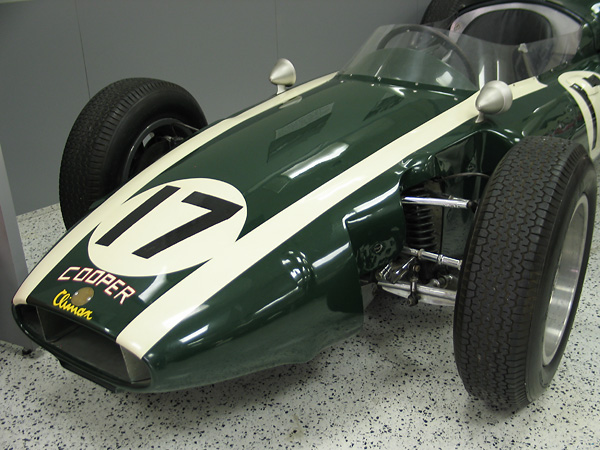
�
Jack Brabham qualified fifteenth quickest (145.144mph) and finished ninth in the 1961 Indy 500.
�
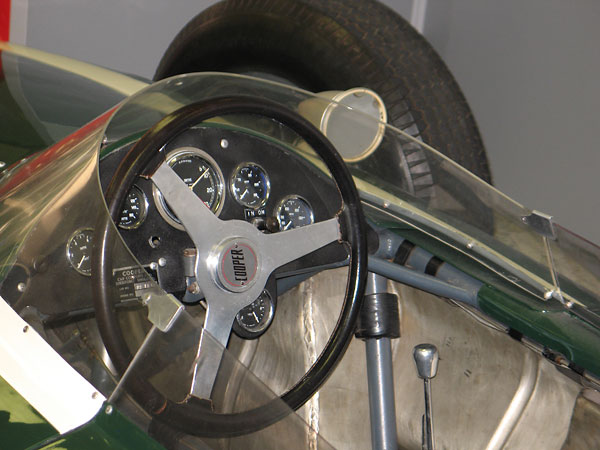
�
Brabham's Cooper is rightfully credited with starting the revolution from front-engined to rear-engined Indy cars,
�
but it wasn't the first rear-engined car to enter an Indy 500. Several rear-engined cars had entered between 1937
�
and 1951, but none of them finished their races. Brabham's Cooper was already well developed: Brabham had
�
used the same car to win his second F1 world championship. It was then stripped down and strengthened for
�
the 500 because the Indy track at that time included a much longer length of brick pavement on the main straight.
�
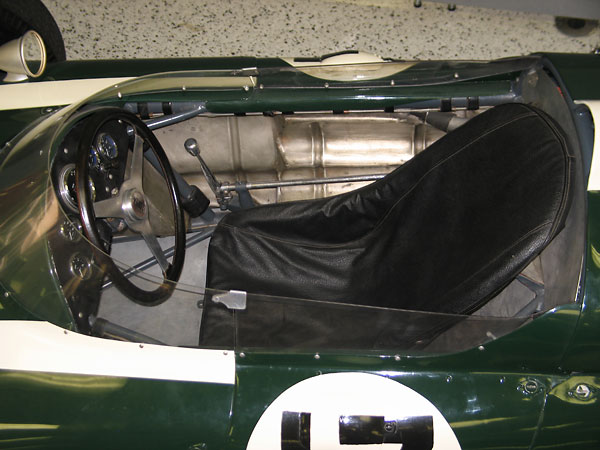
�
In addition to strengthening the chassis, the Cooper-Climax team also increased engine displacement from 2.5
�
to 2.7 liters (167.6cid, 3.78" bore, 3.74" stroke"), and canted it over further to lower its center of gravity.
�
(Brabham's engine was an inline four with dual overhead cams, not the prematurely aborted Climax Godiva V8.)
�
If you're interested to learn about earlier Cooper Climax cars, here's a great place to start:�
1957 Cooper T43.
�
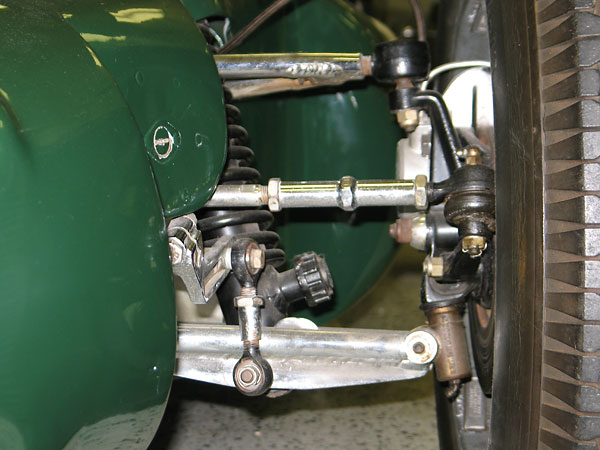
�
Armstrong adjustable coilover shock absorbers on all four corners.
�
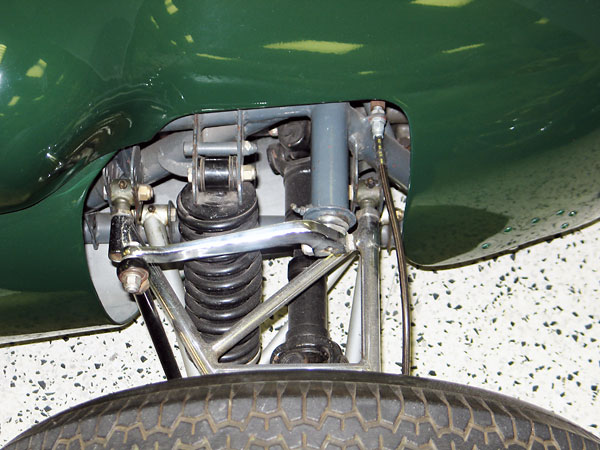
�
The Cooper-Climax's anti-roll bars are easily replaced, but not tuneable once installed.
�
(If rain had started mid-race, there would be no option to soften rear roll stiffness.)
�
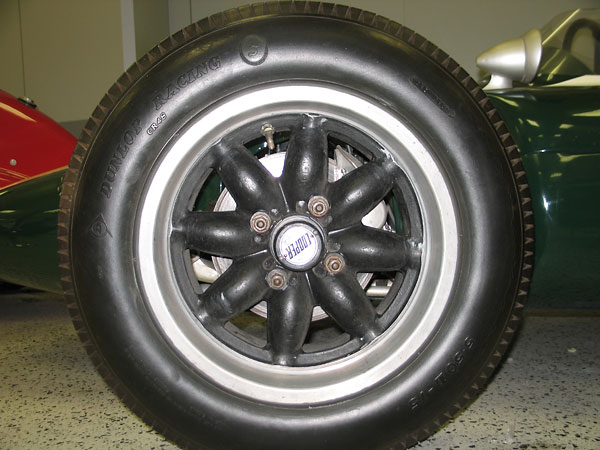
�
Cooper's distinctive eight-spoke magnesium wheels would become iconic.
�
�
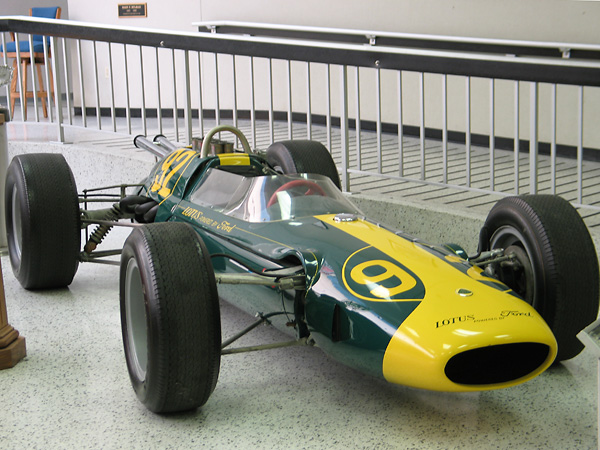
�
This car's paint job, number, and signage are all deliberately deceptive. The Indy 500 Hall of Fame Museum
�
would evidently like visitors to think this is Jim Clark's Lotus Type 29 racecar, chassis# 29/3. In fact, Clark's
�
car was destroyed many years ago. This is the Lotus 29 his teammate, Dan Gurney, drove to a seventh place
�
finish in the 1963 Indy 500. This is chassis# 29/1. When it raced in 1963, it was painted white with a blue
�
stripe. It wore racing number 93. Of course, none of that takes away from Clark's accomplishment...
�
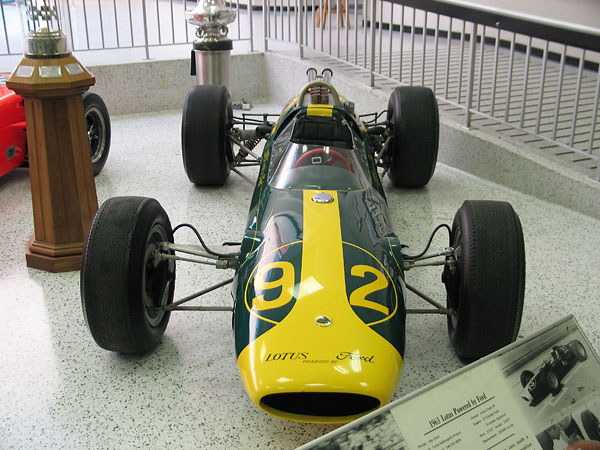
�
Jimmy Clark qualified seventh quickest (149.75mph) and finished second to Parnelli Jones,
�
after leading laps 68-95. For this performance, Clark was named "Rookie of the Year" for 1963.
�
(Notice that the front suspension features inboard shocks and springs!)
�
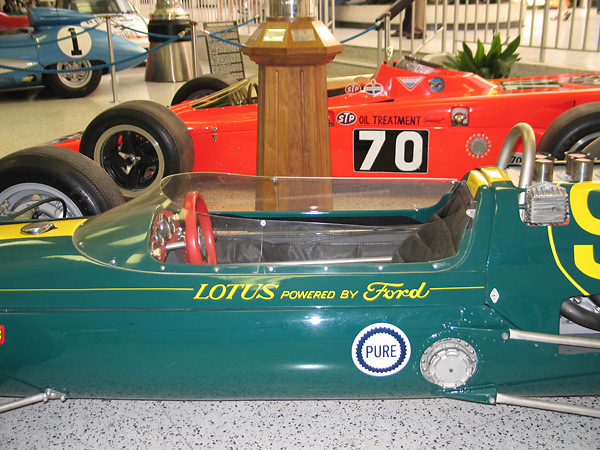
�
Jim Clark's Lotus was powered by a production-based 256cid Ford V8 (3.762" bore, 2.875" stroke.)
�
The Ford engine's performance is often credited with ending Offenhauser's very long term and complete
�
dominance of Indy 500 racing, but that dominance was actually cracked in 1962 when Mickey Thompson's
�
team entered their Buick 215 powered car, with which Dan Gurney drove to Rookie of the Year honors.
�
The Buick qualified 8th and was the only non-Offenhauser engine in 1962's field of 33 cars.
�
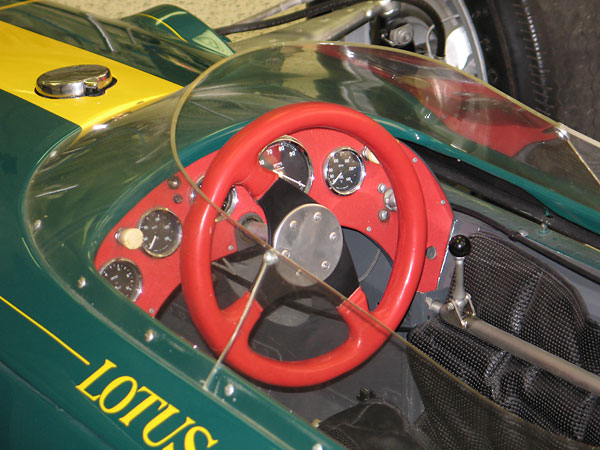
�
Lotus assigned Jimmy Clark an exceptional Chief Mechanic named David Lazenby to manage the Lotus 29's
�
preparation, tuning, and maintenance. You can read more about David Lazenby and his own race car
�
designs here: 1974 Hawke DL11 Formula Ford Racecar
�
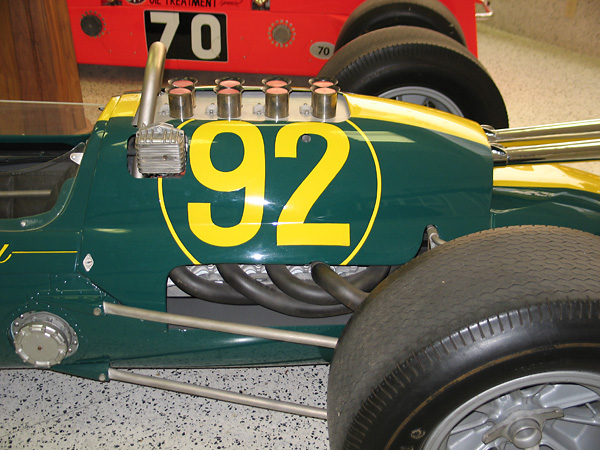
�
Fixed length trailing links, like these, require great fabrication precision.
�
By 1963, we expected they would have used Heim joints for convenient adjustment.
�
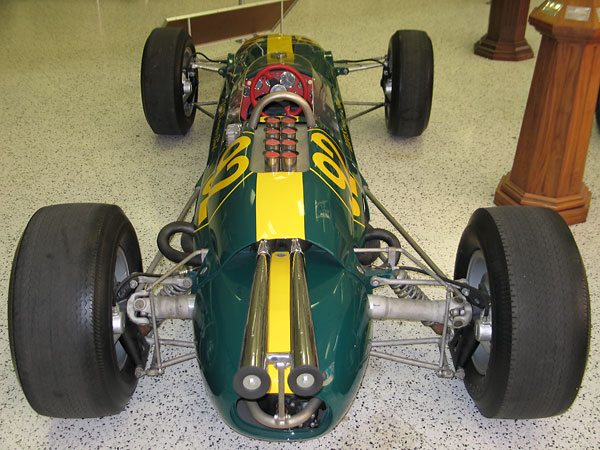
�
In the era before significant aerodynamic downforce, it was common practice to build Indy 500 cars
�
with offset suspension links because, the car's only travel counter-clockwise around the oval-shaped
�
track. The offset reduced weight transfer to the outboard tires, which evened-out tractive force.
�
�
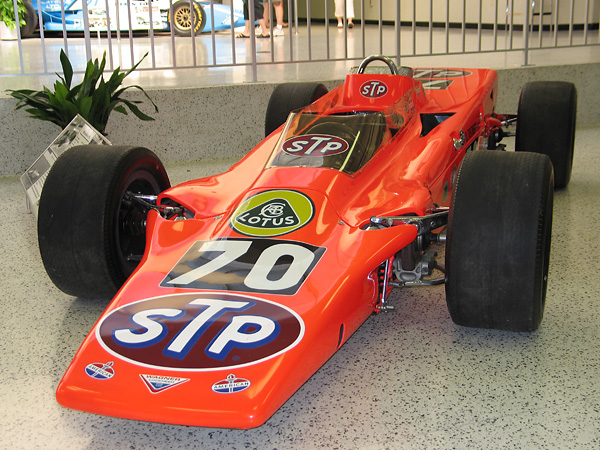
�
Graham Hill's Turbine-Powered Lotus Type 56 (1968 car #70).
�
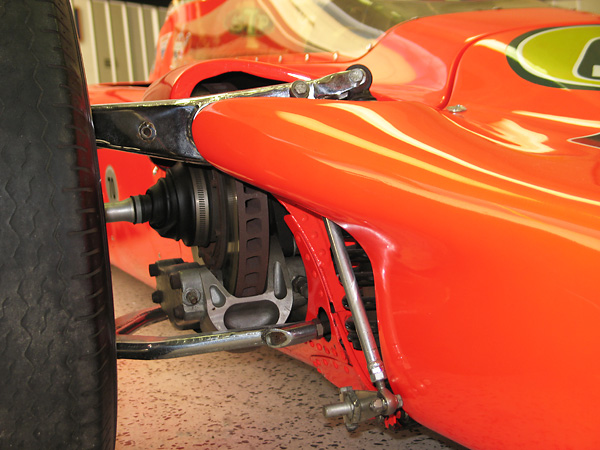
�
Parnelli Jones had led the 1967 Indy 500 by almost a full lap, with just four laps remaining, when a minor
�
transmission part failed and cost him the race. That had been the debut of turbine-powered cars at the
�
Indy 500, as fielded by Andy Granatelli's STP team. Granatelli returned in 1968 with three new turbine
�
engine powered cars. Graham Hill started in the center of the first row, and was running fourth on lap 110
�
when his rear suspension broke. Hill's teammates, Joe Leonard (who had qualified in first position) and
�
Art Pollard both suffered broken fuel shafts; Leonard's flame-out happened while leading, and with just
�
nine laps remaining. After just two spectacular years, the turbine era ended.
�
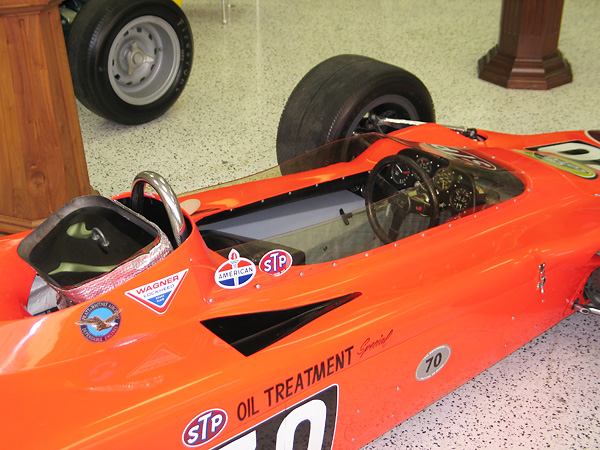
�
Pratt and Whitney conservatively rated their 1968-spec turbine engine at 400 horsepower. Their 1967-spec
�
turbine was unquestionably even more powerful, but USAC adjusted rules to keep racing competitive.
�
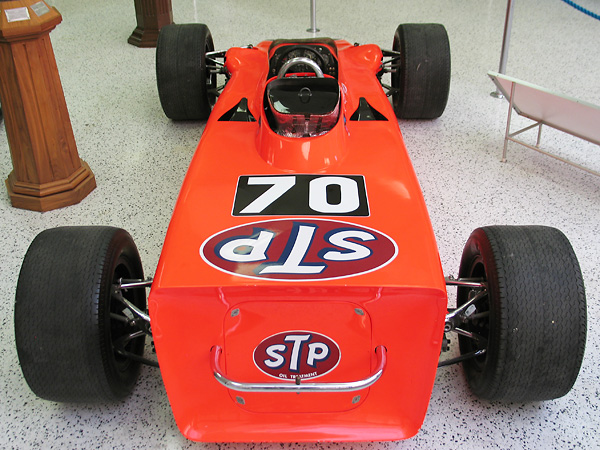
�
The Indy 500 Hall of Fame is the very best automotive museum I've visited. Most of the displays are lit brightly
�
enough you can see and take good photos of the cars. You can walk up close to and around two or three sides
�
of some of the most interesting cars. Signage is much better than average. Still, it's damned frustrating! It's
�
very rare that they let you peek under bodywork. Can you believe they featured this turbine-powered car so
�
prominently, but couldn't be troubled to display one single photo, diagram, or even a descriptive sentence
�
about how its unusual drivetrain was installed? Generally, newer cars are less well displayed and explained.
�
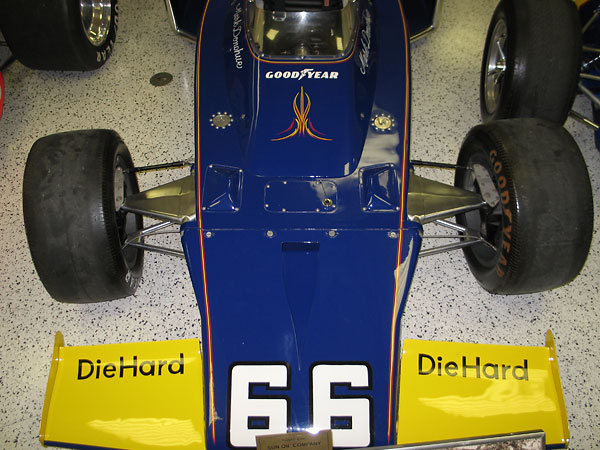
�
This car should have been presented much, much more prominently! This is the Penske-owned McLaren M16
�
that Mark Donohue drove to victory in the 1972 Indianapolis 500 at a record average race speed of 162.962mph.
�
Donohue completely shattered another record on lap 150, by completing it at an average speed of 187.539mph.
�
As remarkable as the Hall of Fame museum is, it's obviously nearly out of room in its current location.
�
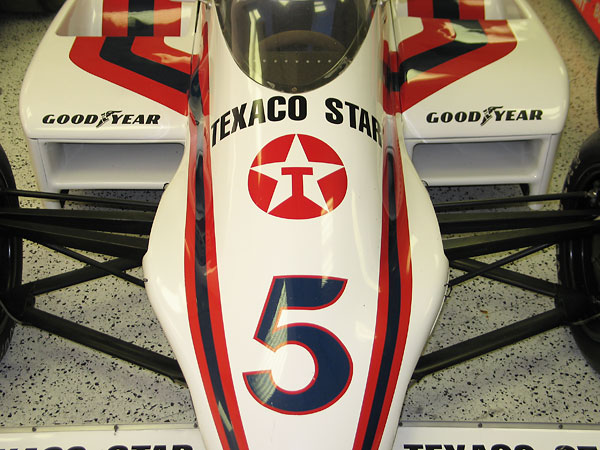
�
This is the March 83C that Tom Sneva drove to victory in the 1983 Indianapolis 500. Sneva had previously
�
finished the Indy 500 in second place three times. The No.5 "Texaco Star" was co-owned by Dan Cotter and
�
by famous race mechanic George Bignotti. 1983 marked the seventh victory for Bignotti as Chief Mechanic,
�
and historians credit Bignotti's development work on the March chassis with its success at Indy. Cosworth
�
powered March racecars won the Indianapolis 500 five straight times between 1983 and 1987. (Question:
�
why do you suppose the radiator vents on the tops of the side pods are at different set-backs?
�
Other Aspects of the Museum's Collection
��
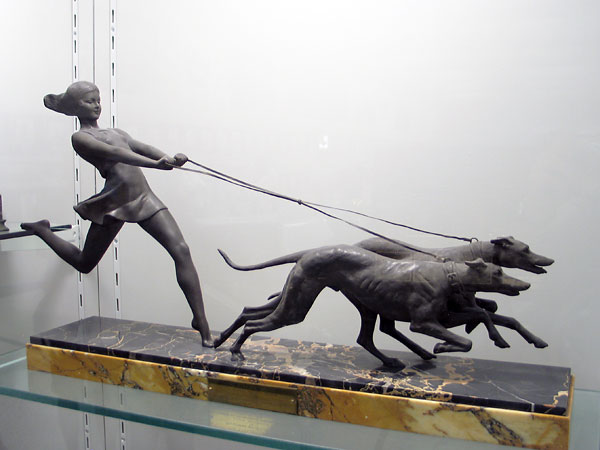
�
The museum has a terrific collection of old trophies. I didn't have time to look at it,
�
but this particularly attractive trophy caught my eye.
�
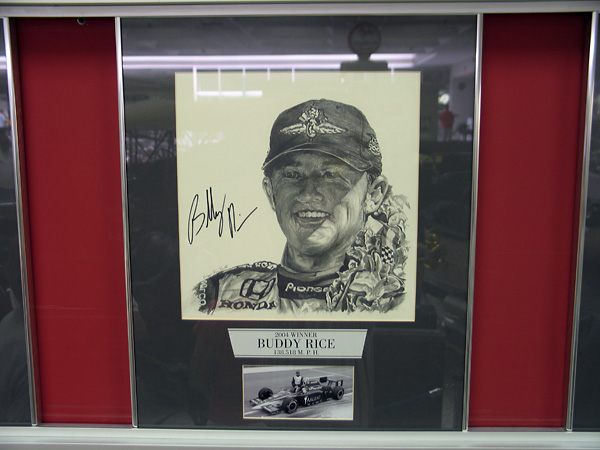
�
The museum also has a plaque for every Indy 500 Champion driver. Here for example, is Buddy Rice who won
�
the 2004 Indy 500 from pole position after leading 91 laps in his Honda-powered Panoz for the Rahal-Letterman
�
racing team. The race was called on the 450th lap due to severe rain and a nearby tornado. In interviews Rice
�
shared credit for the victory with engineer Todd Bowland, my close friend from Virginia Tech Formula SAE days.
�
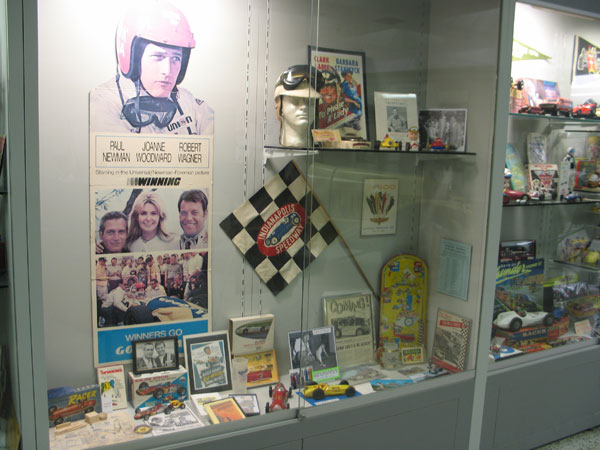
�
Finally, the museum collects and displays artifacts of the Indy 500's impact on American culture. For example,
�
posters from movies that feature Indy 500 racing such as Paul Newman's 1969 film, "Winning". We noticed that
�
the Hall of Fame has large gift shop, but we had to leave in a hurry for our next scheduled BritishV8 activity.
�
� Disclaimer: This page was researched and written by Curtis Jacobson. Views expressed � are those of the author, and are provided without warrantee or guarantee. Apply at your � own risk.�
� Photos by Curtis Jacobson for BritishV8 Magazine. All rights reserved.�

